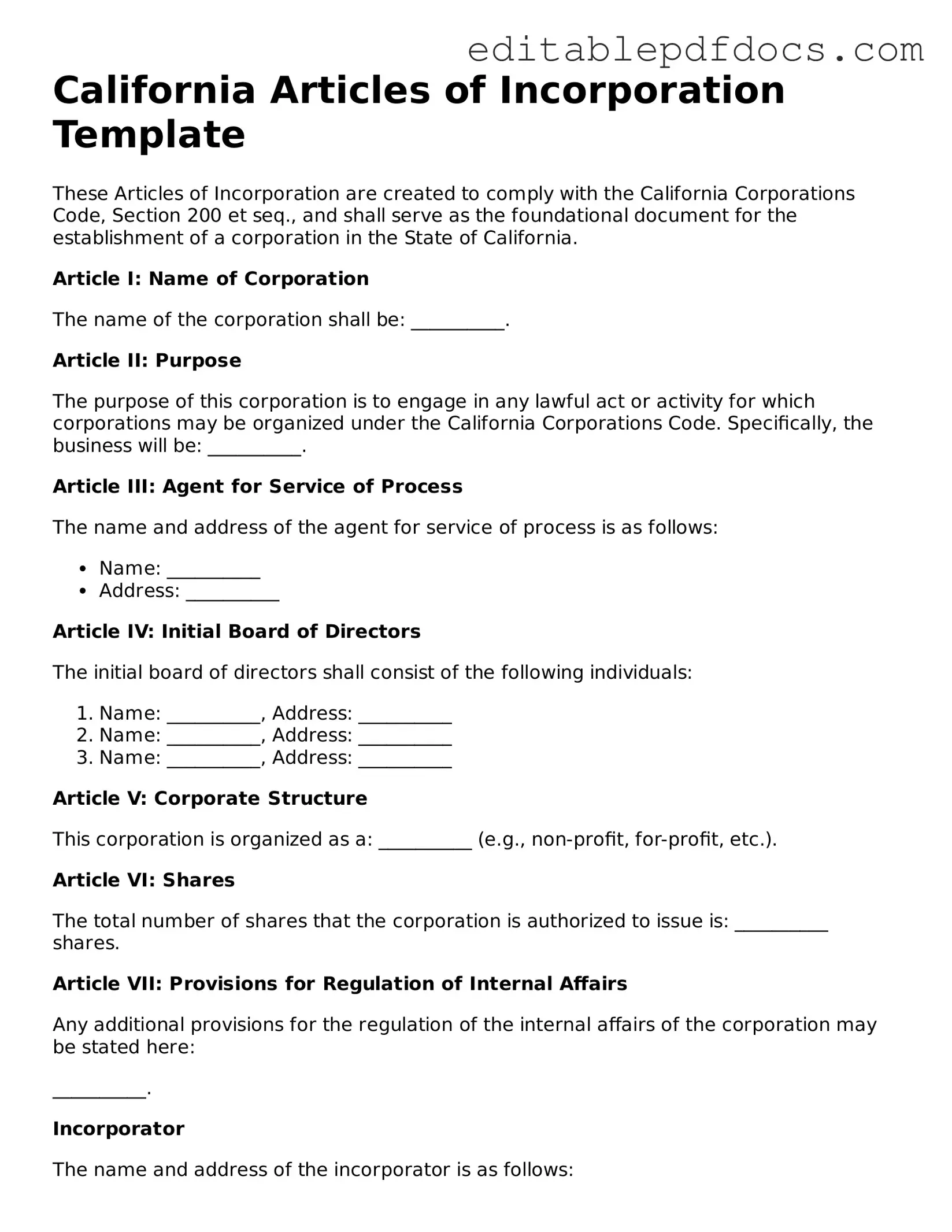When filling out the California Articles of Incorporation form, many people overlook crucial details. One common mistake is failing to provide a clear and accurate name for the corporation. The name must not only be unique but also comply with state regulations. Ensure that the name includes “Corporation,” “Incorporated,” or an abbreviation like “Inc.” Missing this requirement can lead to delays or rejections.
Another frequent error is neglecting to specify the purpose of the corporation. The Articles of Incorporation require a statement of purpose. Some individuals write vague descriptions, which can cause confusion. A clear and concise purpose statement is essential for compliance and future operations.
People often forget to include the correct number of shares the corporation is authorized to issue. This section is critical as it outlines the capital structure. If you do not specify this accurately, it may hinder future fundraising efforts or lead to complications in ownership distribution.
Additionally, many applicants mistakenly assume that including the address of the corporation's principal office is optional. It is not. This information is mandatory and ensures that official correspondence reaches the corporation. Omitting it can result in legal complications down the line.
Another common oversight is failing to provide the name and address of the registered agent. The registered agent is responsible for receiving legal documents. This person or entity must have a physical address in California. Without this information, your corporation may miss important legal notifications.
Some individuals do not pay attention to the signatures required on the form. The Articles of Incorporation must be signed by the incorporators. If signatures are missing or improperly executed, the filing may be rejected. Ensure that all necessary parties sign the document.
Moreover, people sometimes overlook the filing fee. Each submission requires payment of a fee to the California Secretary of State. Not including the correct amount can lead to delays or rejection of the application. Double-check the fee schedule before submission.
Lastly, many applicants fail to make copies of the completed form. Keeping a copy for your records is essential. If any issues arise after submission, having a copy will help resolve them quickly. Always retain documentation for your own reference.
